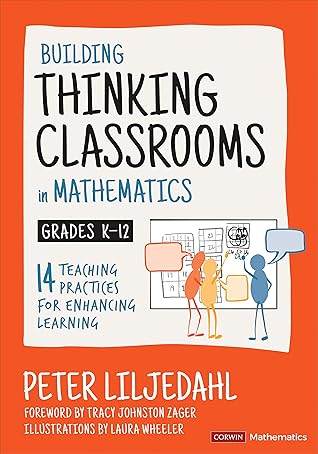More on this book
Community
Kindle Notes & Highlights
Read between
November 15, 2020 - March 7, 2021
order. That is, as long as these practices are implemented after the practices in the first toolkit have been established in your classroom and before the practices in the third to...
This highlight has been truncated due to consecutive passage length restrictions.
the practi...
This highlight has been truncated due to consecutive passage length restrictions.
pay attention to your own capacities
The third toolkit is best implemented in the order that it is presented in the framework—one at a time and not moving on to the next until the previous one is established.
For the fourth toolkit,
What matters is that grading based on data (Chapter 14) occurs after helping students see where they are and
where they are going
in some very specific ways order matters, and in other ways it does not.
From system theory we know that when we try to change a stable system, the system will defend itself.
When that system is a classroom, these defenses look like resisting, complaining, and apathy.
the changes to the classroom routines are radical enough that they overwhelm the system’s ability to defend itself and, as a result, the students allow themselves to change,
These three practices are all about creating a new set of norms in the room that necessitate that the system change, and with it, your students.
the second toolkit is all about teaching practice.
Once students are in flow, they are
ready and willing to think about anything—including curriculum content.
This will require more of you than anything else in the Building Thinking Classrooms Framework.
the assessment practices are where we see some of the biggest changes in student behavior and student performance.
Through the use of coconstructed three-column rubrics, this assessment practice not only shows the students that you
are valuing the day-to-day activities of a thinking classroom—like perseverance, risk taking, and collaboration—but also serves to fine tune student behaviors around these competencies.
assessment also affords you the opportunity to shift student behavior vis-à-vis content.
Once students are comfortable using these navigation instruments for data-driven self-assessment, you are ready to seamlessly use similar structures to collect
and analyze data to track student performance.
The problem, we realized, was that we were not seeing any improvements in students’ individual performances on tests.
how to transform and transfer that synergistic collective knowing and doing into the individual knowing and doing.
transfer from collective to individual understanding.
On their own and in concert, each of these contributes to transforming synergistic collective understanding into individual understanding (see Figure 15.2).
Consolidation from the bottom helps to name and formalize the synergistic experiences of the collaborative work.
Meaningful notes provide students with the first individual opportunity to consolidate the collective learning—from the group and the teacher’s consolidation—and extract from it their personal learning.
The only restrictions, we found, were that immersion in a
thinking activity must precede consolidation, and consolidation must happen before meaningful notes.
They are also about transferring responsibility of teaching into responsibility for learning
student-responsibility practices—and there is a hierarchy among them.
Meaningful notes is a massive departure from this passive activity. Not only do students now have to extract their own
meaning from their collaborative activity and the teacher’s consolidation, they have to choose how to sequence and represent this meaning, and they have to take ownership over its production in the moment and its use in the future.
And, as opportunities, they are sensitive to teacher meddling.
This became my next research question—what is the sequence of implementation of the thinking classroom practices after Year 1?
Does that change the sequence of the practices? It turns out that it does.
whereas the original framework is governed by the acclimatization periods for both students and the teacher, the rebuilding framework is governed only by the acclimatization rate of students.
you are now in the enviable position of building classroom norms as opposed to trying to change classroom norms—a much easier task.
it still works best if you present the move to outcomes-based assessment to students after they have been exposed to assessment as a tool for helping
them see where they are and where they are going.
it is important to increase the responsibility gradually,
My goal from the outset was to get students to think (forest).
What emerged were 14 thinking practices (trees).
Keeping both perspectives in balance is necessary to your success, and thus, that of your students.
It is so easy to become consumed by the importance of each practice that we lose sight of the overall objective.
If we want students t...
This highlight has been truncated due to consecutive passage length restrictions.
need to give them something to think about and someone to think with a...
This highlight has been truncated due to consecutive passage length restrictions.
The goal is still the forest—getting our students to think.
One of the things the research showed over and over


